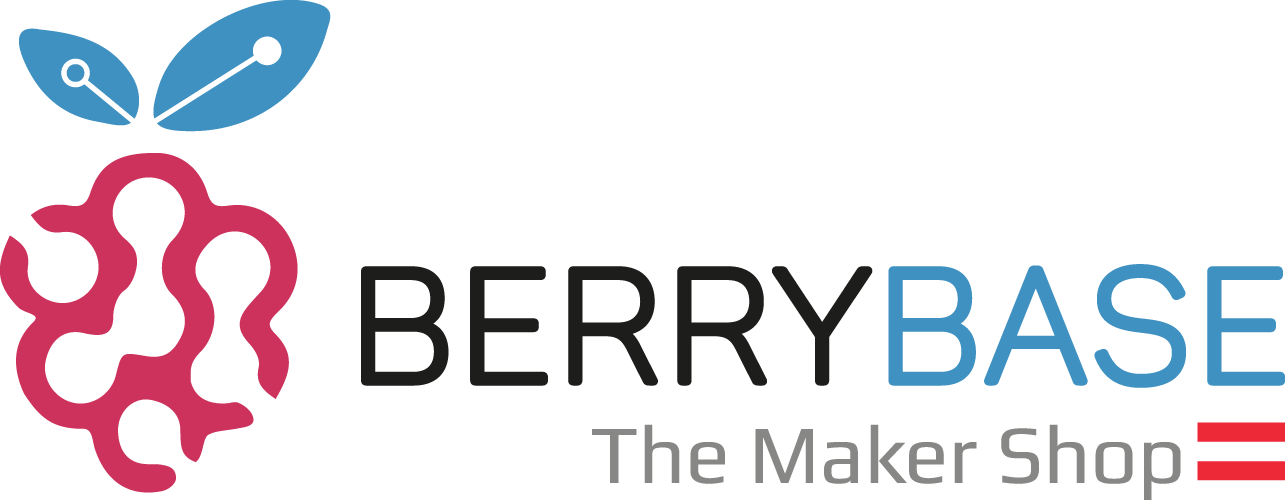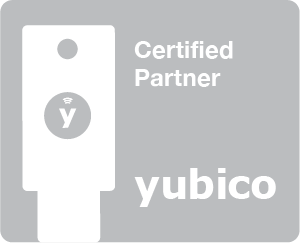No results were found for the filter!
Article no.: PULSESENSOR
Article no.: SE-101020033
Dies ist eine 10er-Packung Biomedical Sensor Pads, Einweg-Elektroden, die zur Messung von EEG, EKG und EMG verwendet werden können. Diese kleinen Pads sind perfekt für die kurzfristige Überwachung von Neurofeedback und Biofeedback-Zwecken. Sie sind einmalig zu verwenden und durch das integrierte, latexfreie Gel sehr handlich. Jedes Pad haftet sehr gut auf der Haut und der Schnappstecker kann problemlos auf die Elektrodenleitung aufgeschoben oder entfernt werden.
Article no.: SEN-12969
Article no.: SE-101020052
Article no.: 955222667
Das MyoWare LED Shield ist für die Kopplung mit dem MyoWare Muskelsensor vorgesehen. Das blaue 10-Segment-Balkendiagramm zeigt die Stärke des gemessenen Signals an. Je mehr Muskelaktivierung gemessen wird, desto weiter oben auf der Platine leuchten die LEDs. Mit diesem Schild erhalten Sie eine visuelle Darstellung der vom MyoWare Muskelsensor gelieferten Signale und eine integrierte Lithium-Polymer (LiPo)-Stromquelle.
Article no.: DEV-13688
Das MyoWare® 2.0 LED Shield wurde entwickelt, um die Stärke des Signals eines Zielmuskels anzuzeigen und den MyoWare 2.0 Muskelsensor mit seiner eingebauten Batterie zu betreiben. Das blaue 10-Segment-Balkendiagramm zeigt die Stärke des gemessenen Signals an. Je mehr Muskelaktivierung gemessen wird, desto höher leuchten die LEDs auf der Platine!
Article no.: DEV-18387
Das MyoWare® 2.0 Referenzkabel ist als Verlängerung für den Referenzpin des MyoWare 2.0 Muskelsensora gedacht. Sie müssen nur den Stift in das Gehäuse einführen und ein biomedizinisches Sensorpad in die Elektrodenaufnahme stecken. Wenn Sie fertig sind, stecken Sie den Schnappstift des Referenzkabels in einen separaten Bereich des Körpers, z. B. in einen knöchernen Teil des Ellenbogens oder in einen nicht benachbarten Muskel in der Nähe des Zielmuskels, den der integrierte Referenzstift des MyoWare 2.0 Muskelsensors nicht erreichen kann.
Article no.: CAB-19244
Sichern Sie Ihr Projekt mit Biometrie ab - dieser hinreißend kleine optische All-in-One-Fingerabdrucksensor macht das Hinzufügen von Fingerabdruckerkennung und -verifizierung super einfach. Er ist extrem schlank, mit einem Kunststoffgehäuse, das in jedes Gehäuse geklebt oder eingebaut werden kann! Es gibt einige eingebettete blaue LEDs, die das äußere Gehäuse beleuchten, wenn der Sensor auf Fingerberührungen wartet.
Article no.: ADA4750
Article no.: UART-FP
Das MyoWare® 2.0 Arduino Shield wurde entwickelt, um bis zu sechs MyoWare 2.0 Muskelsensoren und Link Shields mit 3,5 mm TRS-zu-TRS-Audiokabeln anzuschließen. Das Board ist bereits mit Steckern bestückt, so dass Sie es nur noch auf Ihren Arduino stecken und die Sensoren anschließen müssen, um bis zu sechs Muskelgruppen abzulesen!
Article no.: DEV-18426
Fingerabdruck-Scanner sind genial! Warum einen Schlüssel benutzen, wenn man einen direkt an der Fingerspitze hat? Leider sind sie oft unzuverlässig oder schwierig zu implementieren. Nun nicht mehr! Dieses großartige GT-521F52 Fingerprint-Modul von ADH-Tech kommuniziert über TTL Serial, so dass Sie es einfach in Ihr nächstes Projekt einbinden können. Das Modul selbst übernimmt die gesamte Aufgabe des Lesens und Identifizierens der Fingerabdrücke mit einem integrierten optischen Sensor und einem 32-Bit ARM Cortex M3 Prozessor.
Article no.: SEN-14585
Der MyoWare® 2.0 Muskelsensor ist so konzipiert, dass er getragen werden kann, so dass Sie biomedizinische Sensorpads direkt auf der Platine selbst anbringen können. Dennoch kann es Fälle geben, in denen Sie die Sensorpads außerhalb der Platine anbringen möchten; hier kommt das MyoWare 2.0 Cable Shield ins Spiel. Die Abschirmung enthält eine 3,5-mm-Klinkenbuchse, an die Sie ein herkömmliches Drei-Elektroden-Sensorkabel anschließen können, so dass Sie den Muskelsensor testen und verwenden können, ohne die Platine tatsächlich an Ihrer Person befestigen zu müssen.
Article no.: DEV-18386
Fingerabdruck-Scanner sind seit einigen Jahren auf Verbraucherebene leicht verfügbar, daher ist es nur logisch, dass sie im Laufe der Zeit weiter wachsen und sich weiterentwickeln. Das ist es, was uns zu diesem kapazitiven Fingerabdruckscanner von ADH-Tech bringt. Das AS-108M Fingerabdruck-Sensormodul ist eine Kombination aus Fingerabdruck-Scanner und MCU, die eine UART-Schnittstelle für einfache Funktionalität bietet.
Article no.: SEN-17151
Article no.: CAB-12970
SALE
Sichern Sie Ihr Projekt mit Biometrie - mit diesem optischen All-in-One-Fingerabdrucksensor wird das Hinzufügen von Fingerabdruckerkennung und -verifizierung super einfach. Diese Module werden typischerweise in Tresoren verwendet - es gibt einen leistungsstarken DSP-Chip, der das Bild-Rendering, die Berechnung, das Finden von Merkmalen und die Suche übernimmt. Sie werden an einen beliebigen Mikrocontroller oder ein System mit serieller TTL-Schnittstelle angeschlossen und senden Datenpakete, um Fotos zu machen, Abdrücke zu erkennen, zu hashen und zu suchen. Sie können auch direkt neue Finger einlesen - bis zu 162 Fingerabdrücke können im onboard FLASH-Speicher...
Article no.: ADA751
Fingerabdruck-Scanner sind genial! Warum einen Schlüssel benutzen, wenn man einen direkt an der Fingerspitze hat? Leider sind sie oft unzuverlässig oder schwierig zu implementieren. Nun nicht mehr! Dieses großartige GT-521F32 Fingerprint-Modul von ADH-Tech kommuniziert über TTL Serial, so dass Sie es einfach in Ihr nächstes Projekt einbinden können. Das Modul selbst übernimmt die gesamte Aufgabe des Lesens und Identifizierens der Fingerabdrücke mit einem integrierten optischen Sensor und einem 32-Bit ARM Cortex M3 Prozessor.
Article no.: SEN-14518
Dies ist das MyoWare Proto Shield, ein einfaches Proto-Board für Ihren MyoWare Muskelsensor. Mit dieser Abschirmung können Sie den zur Verfügung gestellten Bereich nutzen, um jede beliebige benutzerdefinierte Schaltung anzulöten, die Sie sich ausdenken können. Dieses Shield bietet 8 x 15 lötbare Durchgangslöcher auf einem Standard 0,1" Raster.
Article no.: BOB-13709
Das MyoWare® 2.0 Muscle Sensor Basic Kit ist ein Arduino-kompatibles All-in-One-Elektromyografie (EMG)-Sensor-Kit, das dich mit dem Minimum aus dem MyoWare 2.0-Ökosystem ausstattet, um mit der Messung und Visualisierung von Muskelaktivitäten zu beginnen. Setze einfach das MyoWare 2.0 LED Shield auf, füge einige EMG-Sensorpads hinzu, befestige den Sensor an einer Muskelgruppe und los geht's! Das Kit enthält außerdem einen Minischraubendreher zum einfachen Entfernen der Schilde, ein USB A zu C Kabel zum Aufladen des 40mAh LiPo-Akkus und ein MyoWare 2.0 Referenzkabel zum Anschluss an große Muskelgruppen.
Article no.: KIT-21267
Article no.: SE-101020713
Article no.: PIM438
Der SparkFun Pulsoximeter- und Herzfrequenzsensor ist ein I2C-basierter biometrischer Sensor, der zwei Chips von Maxim Integrated verwendet: den MAX32664 Biometric Sensor Hub und das MAX30101 Pulsoximetrie- und Herzfrequenzmodul. Während der letztere die gesamte Sensorik übernimmt, ist der erstere ein unglaublich kleiner und schneller Cortex-M4-Prozessor, der alle algorithmischen Berechnungen, die digitale Filterung, die Druck-/Positionskompensation, die erweiterte R-Wellen-Erkennung und die automatische Verstärkungsregelung übernimmt.
Article no.: SEN-15219
Article no.: SE-101020058
SALE
The Fingerprint Sensor is one optical fingerprint sensor which will make adding fingerprint detection and verification super simple
Article no.: SE-101020057
Article no.: SE-101020082
Sichern Sie Ihr Projekt mit Biometrie - mit diesem optischen All-in-One-Fingerabdrucksensor wird das Hinzufügen von Fingerabdruckerkennung und -verifizierung super einfach. Er verfügt sogar über einen LED-Ring um das Erkennungspad, der auf rot, blau oder lila eingestellt werden kann (sowie einige Überblend-/Blinkeffekte) für eine großartige Benutzererfahrung.
Article no.: ADA4651
Sichern Sie Ihr Projekt mit Biometrie - mit diesem optischen All-in-One-Fingerabdrucksensor wird das Hinzufügen von Fingerabdruckerkennung und -verifizierung super einfach. Er ist einfach zu bedienen und erschwinglicher als je zuvor! Diese Module werden typischerweise in Tresoren verwendet - es gibt einen leistungsstarken DSP-Chip, der das Bildrendering, die Berechnung, das Finden von Merkmalen und die Suche übernimmt. Schließen Sie es an einen beliebigen Mikrocontroller oder ein System mit serieller TTL-Schnittstelle an und senden Sie Datenpakete, um Fotos zu machen, Abdrücke zu erkennen, zu hashen und zu suchen.
Article no.: ADA4690
Der MyoWare Muskelsensor ist jetzt so konzipiert, dass er getragen werden kann, so dass Sie biomedizinische Sensorpads direkt an der Platine selbst anbringen können. Es kann jedoch immer noch Fälle geben, in denen Sie die Sensorpads entfernt von der anderen Hardware montieren möchten; hier kommt das MyoWare Cable Shield ins Spiel. Diese Abschirmung bietet eine 3,5-mm-Buchse, an der Sie ein Drei-Elektroden-Sensorkabel anschließen können, so dass Sie den MyoWare Muskelsensor testen und verwenden können, ohne ihn tatsächlich an Ihrer Person zu befestigen.
Article no.: DEV-14109
Article no.: SEN0305
Viewed


















































